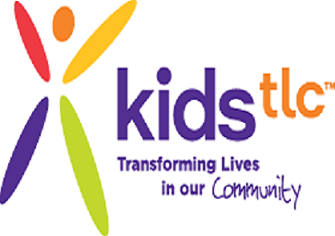Blog
28 Jan Denied and Denied Again by: Kellie Brungard, GPC
Posted at 18:00h
in Competency Eight, Funder Relations, Kellie Brunguard, Organizational Development, Relationships, Strategy
Denial can be challenging, especially when your grant proposals seem to be on a losing streak. Before you start rethinking your grant strategy or wondering if you’re doing something wrong, there may be other proactive steps and factors to take into consideration. Grant funding is complex. There are a multitude of funding streams, networks and relationships, and preferences involved—most of which are beyond your control. And while you can do your best to present an aligned, impactful proposal, sometimes you will never know the reason a proposal is denied. Sometimes, a string of denials prompts a self-evaluation to evaluate how you could do better, or you take the rejection personally. While self-awareness is important, so is understanding the factors that are beyond your control in an application.
28 Jan Did You Know: Congressionally Directed Spending by: AGS Staff
Posted at 13:06h
in Competency Two, Funding, Funding Opportunities, Organizational Development, Strategy
Diversifying a portfolio of funding opportunities can be more than seeking foundation and federal grants. In the current funding landscape, organizations have the capacity to add legislative affairs to their ongoing activities in the pursuit of additional funds to achieve their mission.
Did you know that nonprofits are eligible to pursue Congressional Directed Spending and/or Community Project Funding?
21 Jan Applying the Stages of Group Development to Grants By: Shauna O’Toole, MA, CFRE, GPC
Posted at 18:00h
in Competency Four, Competency Three, Competency Two, Culture, Organizational Development, Program Design, Relationships, Shauna O'Toole, Strategy
Have you encountered inefficiency, frustration, or even conflict when working with a group to develop a grant proposal? Take heart. This is normal. Most teams struggle and experience conflict before they begin performing at their peak. The Stages of Group Development framework, developed by Bruce Tuckman (1965) describes this process. This blog will briefly describe Tuckman’s framework and then apply these ideas to grant proposal development.
16 Jan KidsTLC Receives $59,617 Grant from the United Community Services of Johnson County, Alcohol Tax Fund
KidsTLC recently received a $59,617 grant from the Alcohol Tax Fund to support their residential drug and alcohol program. KidsTLC's residential drug and alcohol program addresses the pervasive issues of co-occurring mental health and substance use disorders in adolescents by providing comprehensive, integrated treatment, preventing the dire consequences of substance misuse, and promoting positive social outcomes.11 Jan Grant Stewardship: Beyond “Thank You” by Megan Campbell, MPA, GPC
Posted at 18:00h
in Competency Eight, Competency Six, Funder Relations, GPC, Grant Reporting, Grants Management, Megan Campbell, MPA, Relationships
Congratulations! You have received notice that a local foundation will gladly support your organization and/or program during the coming year. The foundation board or staff are excited about your mission, your plans, and helping serve your community. You record the amount in your donor and accounting software, generate a letter acknowledging the gift, and move on to managing the implementation of program activities. Right? Well, no.
09 Jan Benilde Hall Receives $10,000 Grant from the Ina Calkins Charitable Trust, Bank of America, N.A., Trustee
Benilde Hall was recently awarded a $10,000 grant from The Ina Calkins Charitable Trust, Bank of America, N.A., Trustee to deliver its Substance Abuse Treatment (SAT) program. Benilde Hall’s SAT program will provide supportive housing and treatment services to 100 adult males experiencing homelessness, substance use disorder (SUD), and co-occurring disorders in Kansas City, Missouri. Funds will primarily support salaries and benefits for program staff to provide direct services (counseling, case management, SUD treatment using evidence-based best practices, and individual and group education). A small portion of the requested funds will support direct program expenses (drug testing, household supplies, utilities).06 Jan Rest and Reset: Strategies for anti-burnout by Kellie Brungard, GPC
Burnout. That’s another buzzword like quiet quitting or hustle culture, right? Actually, burnout has been around for a long while, recognized in the healthcare and social service industries. The World Health Organization (WHO) recognizes burnout as an occupational phenomenon (though it’s not recognized as a medical condition). WHO defines burnout as “a syndrome conceptualized as resulting from chronic workplace stress that has not been successfully managed. It’s characterized by feelings of energy depletion or exhaustion, increased mental distance from one’s job or feelings of negativism or cynicism related to one’s job; and reduced professional efficacy.” In 2020, three grant professionals (Bachman, Planton, and Rodgers) set out to identify the prevalence of burnout among the grant profession. Their findings were published in the Fall 2020 Journal of the Grant Professionals Association, showing a gap in available information as well as initial research indicating more than three in four grant professionals experience physical symptoms, socio-emotional symptoms, or both, of burnout.03 Jan Ready for Reset? So Is Your Grant Strategy by Tracey Diefenbach, GPC
Posted at 19:02h
in Competency Eight, Competency Seven, Competency Two, Grant Calendar, Relationships, Strategy, Tracey Diefenbach, GPC
It’s January. Are you ready for a reset? Better yet, is your grant strategy ready for a reset? I am just hunching here, but I think the answer may be “yes!”



